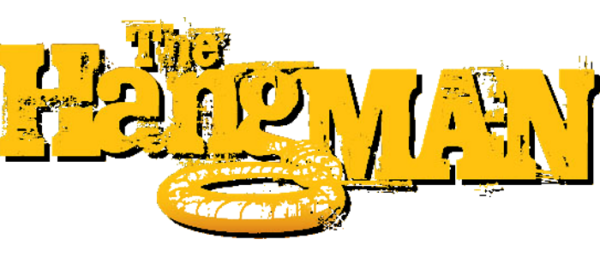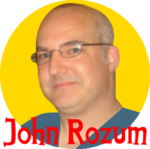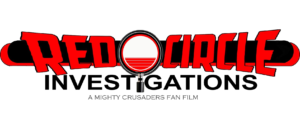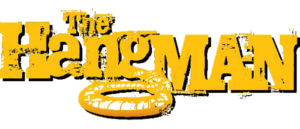John Rozum talks about THE HANGMAN

 We continue our in depth look at DC’s new Red Circle line with John Rozum and his take on the Hangman which will be appearing as a co-feature in The Web, which debuts in September.
We continue our in depth look at DC’s new Red Circle line with John Rozum and his take on the Hangman which will be appearing as a co-feature in The Web, which debuts in September.
First Comics News: You have been working at DC for a long time, on everything from Xombi to Scooby Doo. How did you break in?
John Rozum: I began at Marvel, purely by accident back in the very late 1980s, through Dwayne McDuffie, who was an assistant editor there at the time. When Dwayne asked me to write Xombifor Milestone in the mid 1990s, that opened a lot of doors for me. I encountered a lot of people working in the comics industry who liked the work I was doing on Xombi. Some were editors such as Joan Hilty, Joey Cavalieri, and Heidi MacDonald, who provided much of the work I’ve done at DC.
1st: How did you get the job on Hangman?
John: Another project I was supposed to be writing for Rachel Gluckstern fell through at the last minute, and she offered me The Hangman as a replacement. It’s actually a good match since both projects have some overlapping elements. I’d already been ruminating on a lot of the things that I ended up incorporating into The Hangman especially those pertaining to immortality. The fact that I’m accustomed to telling complete stories in such a short amount of pages on the various Cartoon Network titles I write was a plus.
1st: Had you been a fan of the Hangman prior to getting the assignment?
John: Aside from having seen some of the covers from Special Comics and the like, I did not know much about the character prior to taking on this project. This was probably for the best since the character had been stripped down, streamlined, and restructured by Joe Stracynski. With no real familiarity with the original character I was not conflicted with trying to make the new character mesh with any affection I might have had for the old.
1st: Rachel Gluckstern is your editor on the series, what did she tell you she wanted from the series?
John: Rachel Gluckstern and I talked about it quite a bit before I began, and continue to do so. She’s a really good editor, and has provided a lot of good ideas and really done a great job of getting me started on this.
1st: Joe Stracynski said he left a “bible” for writers of the ongoing series. What type of notes did Joe Stracynski leave for you as the incoming writer?
John: Beyond his 2-page bible, most of which appeared in the issue he wrote, not too much. I essentially took what he did and used that as a starting point and began developing new ideas and creating a mythology for the Hangman which will eventually explain the source of his powers and his place in the Universe.
1st: Originally the Hangman was a caped crime fighter with no super powers, fighting crime to avenge the death of his brother. It appears that in the new Red Circle, the Web stole Hangman’s origin. Is there anything retained from the Golden Age Hangman?
John: Probably not too much. I plan to revisit certain elements, such as his projecting a gallows to announce his arrival, but that may not be a regular feature. Other things will come back, such as some of the villains including the Ugly Man and the Jackal. These characters will retain more of t heir core essence than the Hangman did, but these will not be slavish reproductions of the original villains either. These are new characters as well, adapted to fit the needs of the new series, though they will share some physical characteristics and some behavioral traits with the original characters.
Having said that, I don’t think that fans of the original characters will be outraged by any of the changes. The changes were made in a manner respectful to, both, the original characters, and to their fans. I think the fans will find them true in spirit to the original characters. I think they will also be intrigued by the new version of the Hangman, and pleased by his new powers. I would say that, at least with the Hangman, the approach is not dissimilar to how Golden Age characters such as the Flash and Green Lantern were revived in the Silver Age; the names were the same and there was some similarity of powers and costume elements, so that there was a link between them, but the characters themselves were all new and catered to a new era.
1st: The Hangman has been around since the Civil War. Has he moved along with the times, or is he culturally out of place with the other characters?
John: He’s made every effort to not stand out, and to change with the times. Obviously, some social changes were probably more difficult for him to cope with than others, but he’s lived through all of the years between the 1830s and the present. He’s not simply a displaced visitor from another time. His home is not filled with relics of the past, though he does have some paintings and such which connect him to his time living in the American West of the mid-19th Century.
1st: Even though he is a participant in the world around him, because he’s stopped aging as a thirty-something year old man and not a twenty-something year old man, he remains just outside of culture enough to have been more of an observer than a participant. Physically, he’s always too old to participate in the culture of youth as it is being shaped and formed, like someone’s parent trying to make sense of the music, or pop culture of their children. He has an odd time connecting with people on this level conversationally. A lot o f people bond over childhood nostalgia; tv shows we watched, games we played, toys we had, but since Dickering’s childhood was in the 1830s, he has nothing to relate to. He didn’t spend his childhood watching Hanna-Barbera cartoons or playing with G.I. Joes or ‘Star Wars’ action figures. Instead, he takes his knowledge of past decades and turns it into a hobby, an interest, so that he can connect with people on a level that he’s comfortable with, without it making him seem too strange.
John: What makes his life most difficult, in any time period, is having to adjust his life to accommodate his automatic transformations into the Hangman at sunset and back into Robert Dickering at sunrise. He has some issues with being human, yet apart from humanity, and a reluctance to become close to anyone, even though Dickering is a friendly, emotive, and romantically inclined individual.
1st: The Hangman is a supernatural character, does he crossover with the other magic based characters in the DCU or is the “Red Circle” separate?
John: For now, I’m keeping the Hangman in his own little corner of the DCU by himself. At some point he’ll no doubt meet some of the other supernatural characters in the DC Universe, as well as some of the non-supernatural costumed crime fighters. There are a number of DC’s characters who lived in the 19th and early 20th Centuries that I’d like to pair him with. In fact we’ll see him with one such character, briefly, in the second issue. Beyond this brief scene it will be a while before we see further team-ups. I think it’s better initially to allow readers to get to know this unfamiliar character on his own terms before we start loading the book with guest stars.
As for the other Red Circle characters, Rachel Gluckstern has initiated an effort for us to keep each other informed on what we are doing and where we are going so that we can intersect, keep off of each others toes, and build up a little pocket world within the DCU. At this stage, I think we’re all still trying to get our heads around what we are doing with our individual characters and not quite ready to start overlapping our stories. I’m sure that will start happening once we all feel more comfortable with what we are doing.
1st: The Hangman travels the Earth, saving the lives of innocents and hastening the deaths of the guilty. How is he different from the Spectre?
John: That was one of the first questions I had, and the answers were something I had to work out, so it’s something that will be addressed in the series. There are numerous differences, but in a nutshell, the Hangman always offers retribution first. He uses his powers to scare those he sees as being on a path to damnation into giving up their evil ways and going straight. In some cases this is enough. For others, if they don’t heed his one and only warning…it’s something you’ll be able to witness first hand early in the series. Unlike the Spectre, the Hangman’s other half, Robert Dickering, has a life of his own, and none of the powers of the Hangman. Unlike other characters with that dichotomy where they transform into another identity driven, or cursed, with a task to perform, Dickering is also under that same curse. Just as the Hangman must go out and aid the innocent and punish the guilty, Dickering must labor all day saving the innocent as well. His life is one of constant toil towards the needs of others with little or no time for his own needs. The wear of this is constant, and the way he reacts to it changes over time, too.
1st: What do you have planed for the Hangman long term?
John: I don’t want to give away too much, but there are three areas that attracted me to the project and where I’ll be emphasizing my efforts.
1st: The first is the human element. What does it mean for Robert Dickering to be someone who will never die, and who is forced to divide his life with a supernatural aspect that he transforms into every night.
John: The second thing is the backstory. The story of Robert Dickering begins in the 1830s, and for the Hangman it’s 1864, so there are about a century and a half of stories to fill in and I’m really looking forward to doing that. A lot of changes took place in that period of time, and it will be a lot of fun to see how both Dickering and the Hangman find a way to fit in to all of those time periods.
Finally, I’ve created a mythology that explains the source of the Hangman’s powers, and how the Hangman fits into the world. I’m really looking forward to slowly revealing this mythology as the series progresses.





